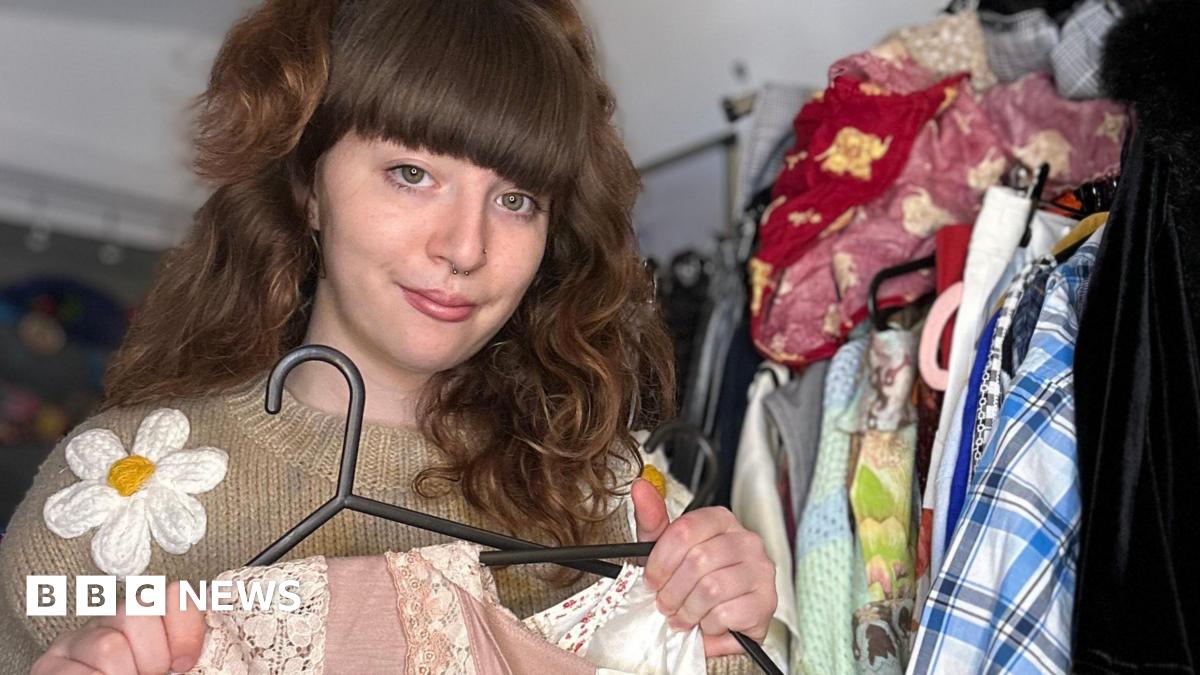London Fashion Week kicks off with a tribute to genderless fashion

By
AFP
Translated by
Nazia BIBI KEENOO
Published
February 19, 2025
London Fashion Week Autumn/Winter 2025 kicks off on Thursday, 20 February, with designer Harris Reed setting the stage with his signature theatrical creations, marking the start of four days of shows in the British capital. This edition, however, will be shorter than usual, with several notable absences.
The Anglo-American designer, who also serves as artistic director of Nina Ricci, will present his eponymous label at Tate Britain. The label is known for its dramatic silhouettes, often topped with oversized halos crafted from recycled wallpaper and interior fabrics.
The 28-year-old designer, instantly recognisable for his long red hair, gained global attention in 2020 when he designed the crinoline skirt worn by Harry Styles on the cover of Vogue. Styles made history as the first-ever solo male cover star of US Vogue in its December 2020 issue. His work embodies “non-binary romanticism”, a style that has captivated celebrities such as Lil Nas X, Adele, and Beyoncé.
Over the next four days, Erdem, Simone Rocha, Richard Quinn, Roksanda, and the iconic Burberry will unveil their Autumn/Winter 2025 collections, with Burberry closing the event.
Currently facing challenges, the heritage brand is the subject of speculation regarding the departure of its creative director, Daniel Lee. Having joined just over two years ago, Lee has made efforts to modernise the brand, though with mixed results.
Multiple reports suggest he could be replaced by British designer Kim Jones, who left his role at Dior Homme in late January after seven years.
Absent from the schedule: JW Anderson
One of the most talked-about absences this season is JW Anderson, the label of Northern Irish designer Jonathan Anderson. Anderson also serves as creative director at Loewe and has been mentioned as a potential candidate for Dior.
The British Fashion Awards 2024 Designer of the Year was also absent from Milan Men’s Fashion Week and Paris Fashion Week, where Loewe—like Dior—is part of the LVMH portfolio.
Sustainability at the forefront
For the first time, young designers selected for the British Fashion Council‘s (BFC) NewGen programme are required to meet sustainability criteria when producing their collections.
The initiative aligns with Copenhagen Fashion Week’s eco-conscious approach, which introduced similar measures in 2023.
The goal is to gradually extend sustainability requirements to all brands showcasing in London.
In November, the BFC also announced a ban on exotic animal skins—such as crocodiles and snakes—starting with this Autumn/Winter 2025 edition. However, the move is largely symbolic, as no brands on the London Fashion Week schedule currently use these materials.
“A challenging period”
This edition of London Fashion Week is nearly a day shorter than last year’s Autumn/Winter 2024 event, with designers such as Molly Goddard and Sinéad O’Dwyer absent from the schedule.
Others, including Dilara Findikoglu and Conner Ives, have reduced their show frequency to once a year, while some have scaled back to presentations or intimate gatherings instead of full runway shows.
Caroline Rush, chief executive of the BFC, acknowledged that British brands are navigating a particularly challenging period, impacted by the pandemic, Brexit, and the 2024 closure of Matchesfashion, the luxury e-commerce platform.
“We are working closely with these businesses to support them through this period,” Caroline Rush told AFP, emphasising the importance of London Fashion Week as a platform that attracts influencers, journalists, and buyers from around the world.
“When I started 16 years ago, the first question I was asked was, ‘Are Fashion Weeks still relevant?'” recalled Rush, who will step down from her role in the coming months.
“I believe they are highly relevant. In London especially, we have so many small independent businesses that need a platform to reach a global audience,” she added.
Rush will be succeeded by Laura Weir, creative director at Selfridges and a former British Vogue journalist.
According to the British Fashion Council, the UK fashion industry employs 800,000 people and contributes nearly £30 billion ($38 billion) to the economy.
cla-lul-alm / By Clara Lalanne and Lucie Lequier
Copyright © 2025 AFP. All rights reserved. All information displayed in this section (dispatches, photographs, logos) are protected by intellectual property rights owned by Agence France-Presse. As a consequence you may not copy, reproduce, modify, transmit, publish, display or in any way commercially exploit any of the contents of this section without the prior written consent of Agence France-Presses.
Related
High street fashion giant to close 35 stores in just…
SelectFashion, the popular women's fashion retailer known for its affordable, trendy clothing, is set to close 35 stores within days, following a series of clo
Paris Friday: Victoria Beckham, Issey Miyake, Kenzo, and Róisín Pierce
One ranged from a gilded embassy or under the Louvre to an elegant br
Hillingdon woman adapts clothes to help neurodivergent shoppers
Ms Rule is a special educational needs coordinator at Douay Martyrs Catholic Secondary School in Hillingdon but works on her business in the evenings and at wee
British fashion creators accuse Chinese retail giant Shein of using…
British fashion is under threat from artificial intelligence that can identify popular products and flood the market with cheap copies, designers have warned.Fu












